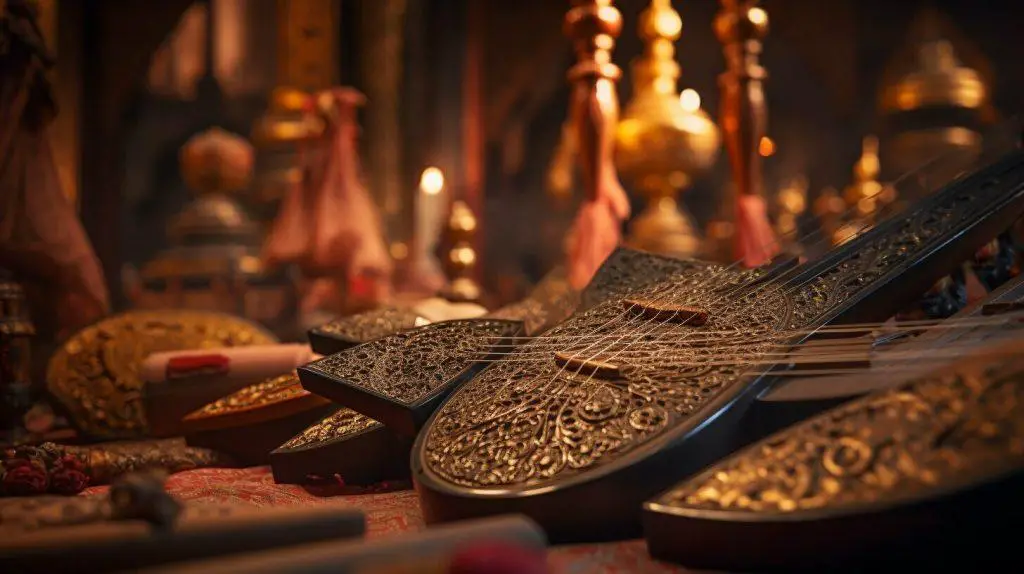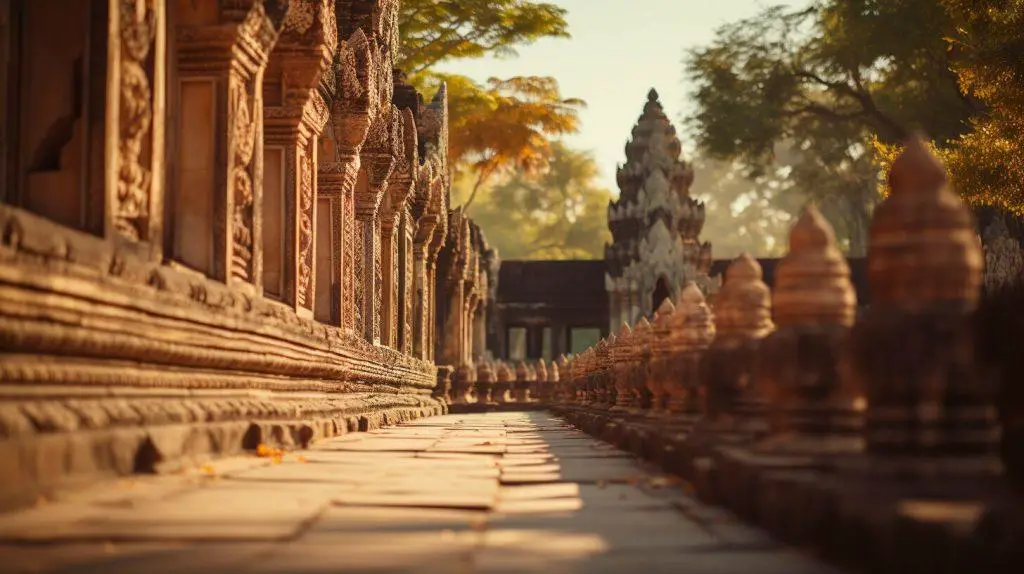Cambodian music is a unique blend of traditional and modern influences and features a wide range of musical instruments. In this article, we will explore the rich history and cultural significance of traditional Cambodian musical instruments, their role in Cambodian society, and their impact on modern music.
Key Takeaways
- Traditional Cambodian music is deeply intertwined with Cambodian culture and society.
- There are three main categories of traditional Cambodian musical instruments: strings, winds, and percussion.
- Indian and Chinese music have had a significant influence on traditional Cambodian music.
- Traditional Cambodian music is often accompanied by dance and is an essential part of many cultural events.
- Efforts are being made to preserve and revive traditional Cambodian music, which suffered greatly during the Khmer Rouge regime.
The Role of Music in Cambodian Culture
Music has played a critical role in Cambodian culture for centuries, deeply intertwined with various aspects of society. In traditional Cambodian society, music was used to accompany religious ceremonies, court dances, and other important events.
Music was also an essential component of courtship and romantic relationships. Traditional love songs, or smot, were often performed with xylophones and other instruments to woo potential partners.
Traditional music was also used to communicate stories and legends through song and dance. The Robam Tep Apsara, for example, is a classical dance that tells the story of the Apsara, or the celestial nymphs of Hindu and Buddhist mythology.
During the Khmer Rouge regime, however, traditional music was banned and many musicians were killed, leading to a decline in the practice and performance of traditional Cambodian music. Today, efforts are being made to revive and preserve this integral aspect of Cambodian culture.
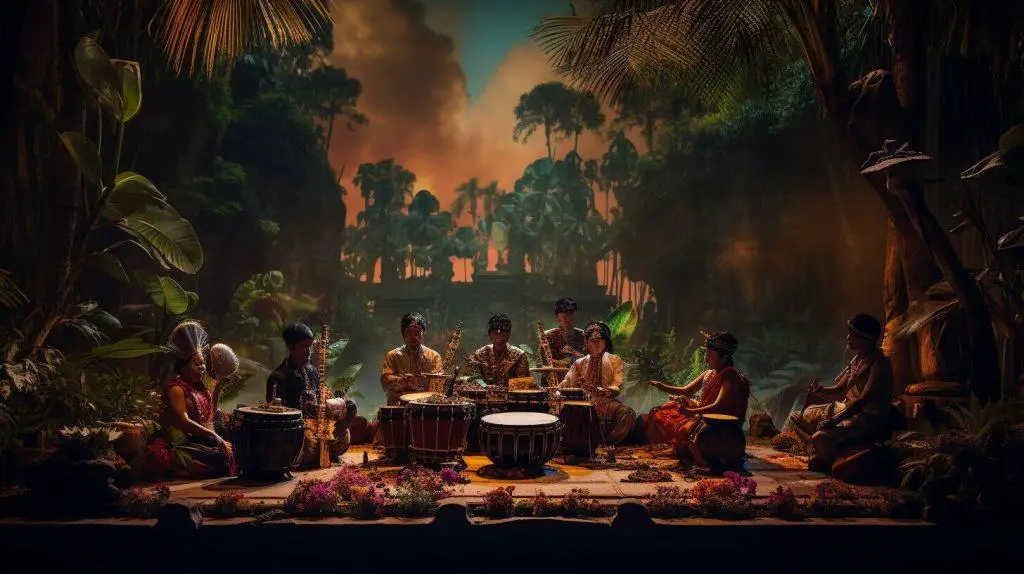
“Music has played a critical role in Cambodian culture for centuries, deeply intertwined with various aspects of society.”
Traditional Cambodian String Instruments
In Cambodia, string instruments have a significant role in traditional music. Each instrument has its unique sound, playing technique, and meaning, making them an essential part of Cambodia’s cultural identity. The following are some of the traditional Cambodian string instruments:
| Instrument | Description | Image |
|---|---|---|
| Tro khmer | An ancient two-stringed fiddle made from coconut wood and horsehair, producing a high-pitched sound. It is often played in ensembles and is considered a classical instrument. | 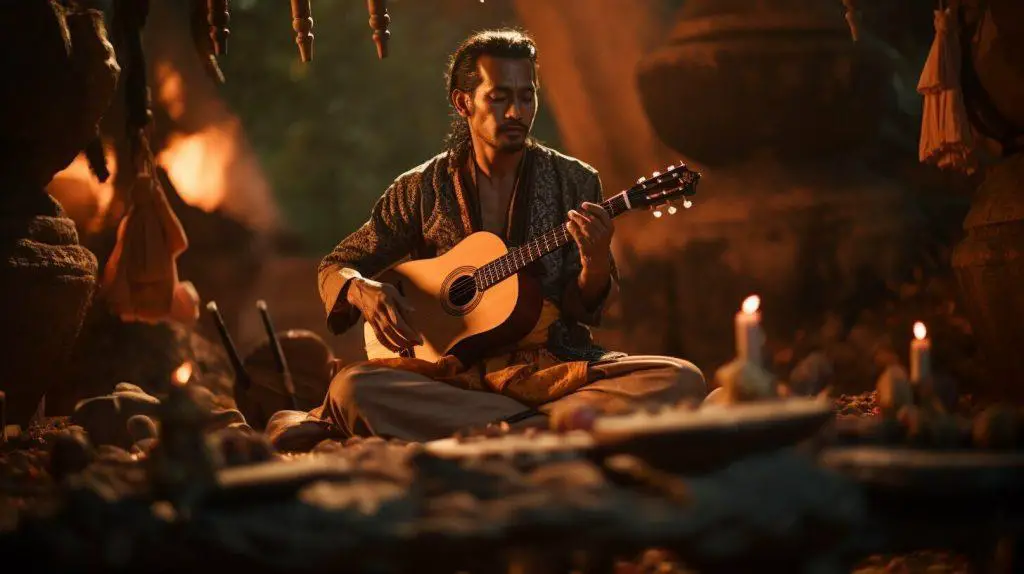 |
| Chapey dong veng | A long-necked fretted lute that is played by plucking the strings with a plectrum. It is often used for solo performances and storytelling, and commonly played by buskers on the streets. | 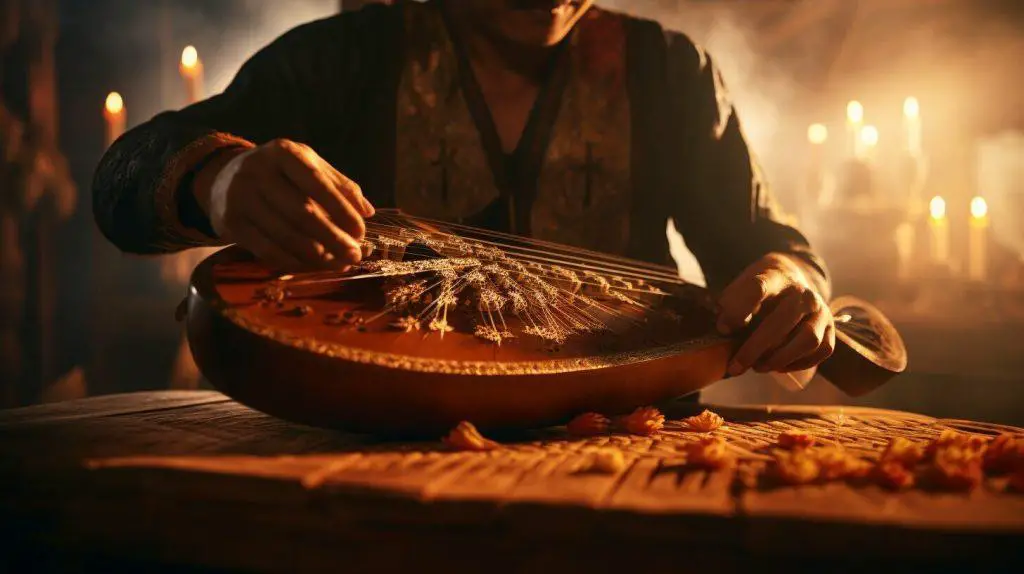 |
| Kse diev | A two-stringed boat-shaped fiddle that originated from the Khmer Loeu ethnic group. It produces a soft, melancholic sound, often played in ensembles or for ceremonial purposes. | 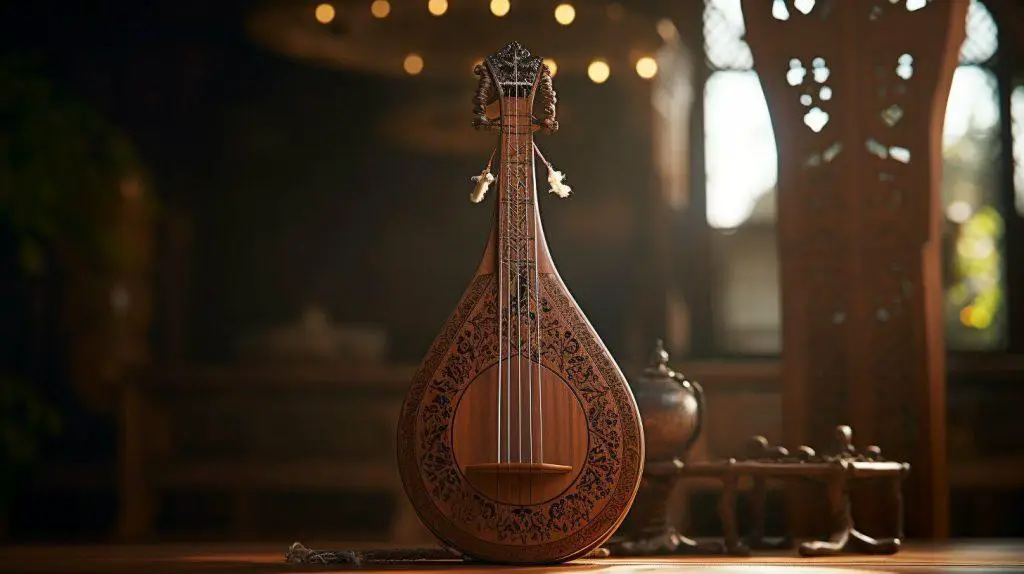 |
Traditional Cambodian String Instruments
Some other traditional Cambodian string instruments include the tro sau thom, a bass fiddle, and the roneat ek, a type of zither. The use of string instruments in traditional Cambodian music provides a rich and diverse musical experience that reflects the country’s culture and heritage.
Traditional Cambodian Wind Instruments
Wind instruments are an important component of traditional Cambodian music, producing a distinctive and colorful sound that is unique to the country’s cultural heritage. These instruments are made from various materials, such as bamboo, wood, and metal, and are played using different techniques to create a range of tones and melodies.
One of the most commonly used wind instruments in Cambodian music is the sralai, a long bamboo flute with seven holes that is played vertically. Its sound is often described as ethereal and haunting, and it is often featured in traditional ensemble performances.
Another popular wind instrument is the khloy, a type of end-blown bamboo flute that produces a deep and breathy tone. It is frequently used in wedding ceremonies and other special occasions, and is believed to bring good luck and prosperity.
The peat ek, or bamboo xylophone, is also considered a wind instrument in Cambodian music as it is played by striking the bamboo tubes with mallets. It is typically used to provide a rhythmic accompaniment to other instruments, such as the sralai or tro khmer.
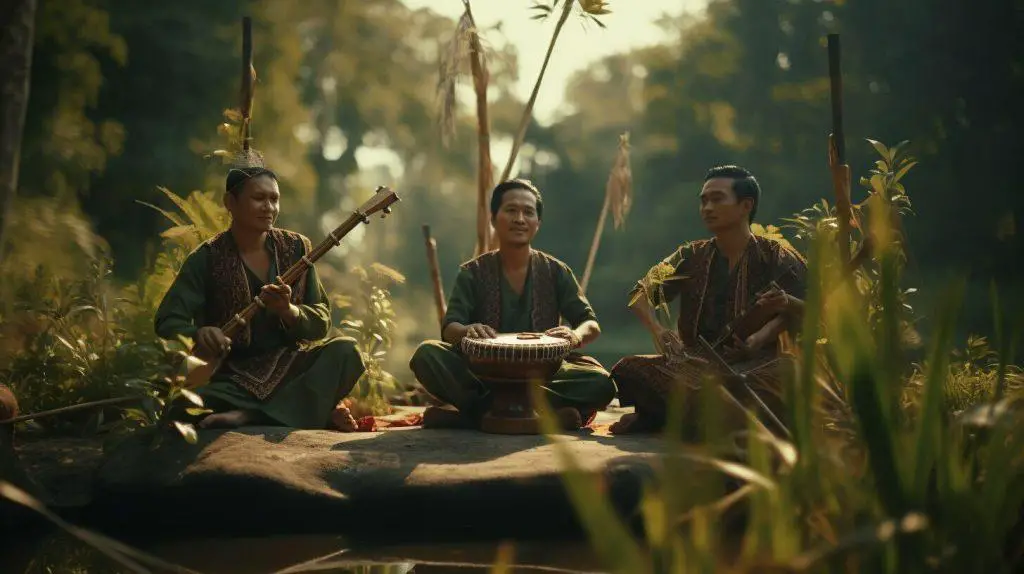
The use of wind instruments in Cambodian music dates back to ancient times, with influences from Indian and Chinese music. Over the centuries, these instruments have evolved and diversified, with new techniques and styles being developed to suit different types of musical compositions and performances.
Today, traditional Cambodian wind instruments continue to be used in various contexts, from small gatherings to large-scale concerts and festivals. Efforts are also being made to preserve and promote these instruments, with workshops and educational programs aimed at passing on the knowledge and skills to future generations.
Traditional Cambodian Percussion Instruments
Cambodian percussion instruments play a crucial role in traditional music ensembles, providing rhythmic accompaniment for the other instruments. These instruments are typically made from a variety of materials such as bamboo, bronze, and wood, and produce a range of sounds from sharp and clear to deep and resonant.
The skor yike is a type of Cambodian percussion instrument that consists of a pair of small hand cymbals made from brass or bronze. It is commonly used in traditional Cambodian dance performances and provides a bright, metallic sound.
Another popular percussion instrument is the kong vong toch, which is a set of four tuned gongs of different sizes. The largest gong produces the lowest tone, while the smallest produces the highest. This instrument is often played in a musical ensemble known as the pin peat orchestra.
The samphor is a type of traditional Cambodian drum made from wood and animal hide. It comes in various sizes and produces deep, resonant tones. In traditional music ensembles, the samphor is often played alongside other percussion instruments to provide a strong rhythmic foundation for the melody.
Overall, Cambodian percussion instruments are an essential part of traditional Cambodian music, bringing depth and texture to the overall sound.
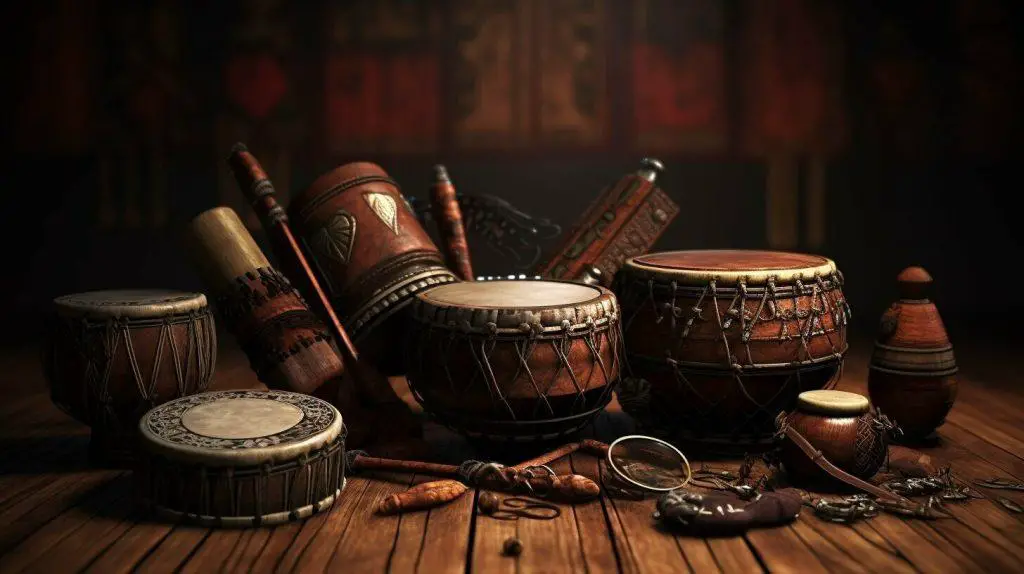
The Influence of Indian and Chinese Music
Traditional Cambodian musical instruments and styles have been shaped by a variety of cultural influences over the centuries. In particular, Indian and Chinese music have played a significant role in shaping the soundscape of Cambodian music.
Indian music has had a strong influence on Cambodia since the time of the ancient Khmer Empire. Some of the earliest examples of Cambodian music were recorded in Sanskrit and were heavily influenced by Indian classical music. The tro khmer, for example, is believed to have originated in India and was brought to Cambodia by Indian traders and musicians.
Chinese music has also had a notable impact on Cambodian music. The Chinese pipa, a four-stringed lute, was introduced to Cambodia during the Angkor period, and is still played today as part of traditional Cambodian ensembles. The sralai and khloy wind instruments, as well as the skor yike percussion instrument, were also influenced by Chinese musical traditions.
Notable Cambodian Musicians
One notable musician who drew inspiration from both Indian and Chinese music was Sinn Sisamouth, a prolific Cambodian singer-songwriter who rose to fame in the 1950s and 1960s. Sisamouth’s music was known for its fusion of traditional Cambodian melodies with Western and Eastern influences.
Another influential Cambodian artist was Chinary Ung, a composer who integrated traditional Cambodian music and instruments into his works. Ung’s compositions often incorporated the use of the Cambodian roneat ek (xylophone) and sralai (oboe).
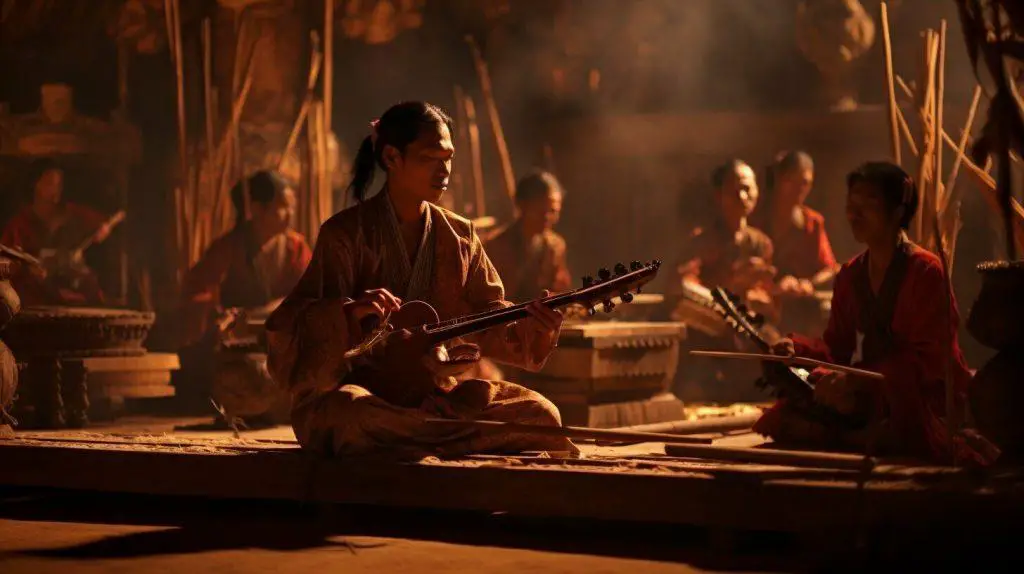
“Cambodia’s musical heritage is rich and diverse, reflecting the country’s multicultural origins. From the Indian-influenced tro khmer to the Chinese-inspired skor yike, Cambodian music is a testament to the cultural exchange and innovation that has taken place throughout the country’s history.”
Traditional Cambodian Dance and Music
Traditional Cambodian dance and music have been intimately linked for centuries, with each art form enhancing and complementing the other. In Cambodian culture, dance is not merely a form of entertainment, but a way to convey stories, emotions, and important cultural values.
The movements of traditional Cambodian dance are often slow and deliberate, accentuating the grace and flexibility of performers. Meanwhile, the music features intricate rhythms and melodies that evoke a range of moods and emotions.
One of the most famous examples of traditional Cambodian dance and music is the Apsara dance, which dates back to the Angkor period of Cambodian history. Apsara dance typically features dancers in elaborate silk costumes performing slow, graceful movements that are accompanied by a pin peat ensemble, which includes a range of instruments like the sralai oboe and the roneat xylophone.
Cambodian Classical Dance
Cambodian classical dance is a highly stylized and formalized form of dance that has been passed down through generations. It often tells stories from classical Cambodian literature and mythology, with performers wearing intricate costumes and headdresses.
The musical accompaniment for Cambodian classical dance is typically provided by a pin peat orchestra, which features a range of traditional instruments like the skor thom drum and ching cymbals. The music follows specific melodies and rhythms that are closely tied to the movements of the dancers.
Shadow Puppet Theater
Shadow puppet theater, or Sbaek Thom, is another important form of traditional Cambodian performing art that involves music and storytelling. The art form uses large leather puppets that are manipulated behind a screen, with the audience only able to see the shadows of the puppets.
The music for shadow puppet theater is typically performed by a mohori orchestra, which uses a range of traditional instruments like the khloy bamboo flute and the chapey dong veng lute. The music serves as a backdrop to the story being told by the puppets.
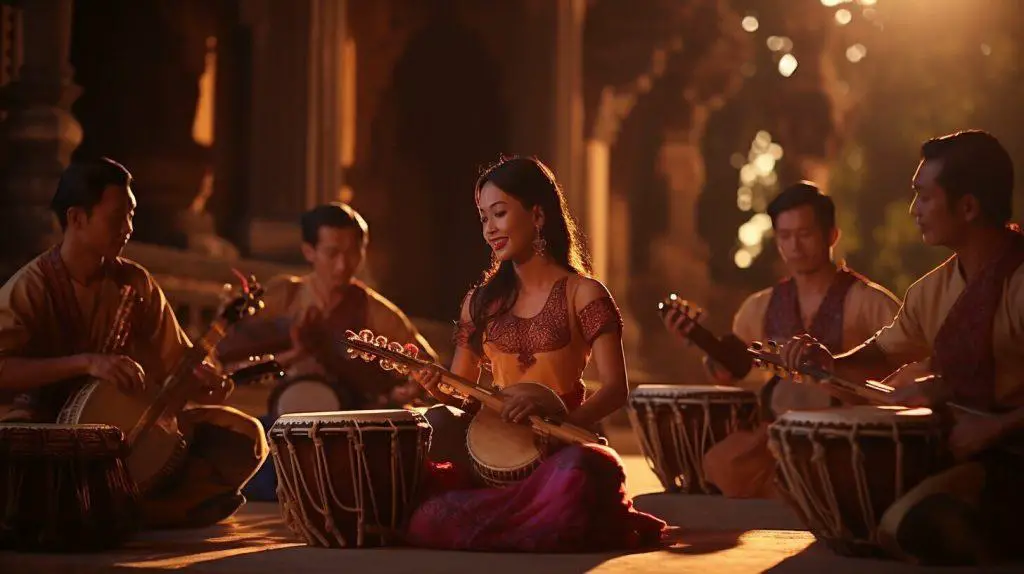
Today, traditional Cambodian dance and music continue to be celebrated and performed throughout Cambodia and the world. While there are some concerns about the preservation of these art forms in the face of modernization, there is also a growing interest in returning to traditional techniques and styles.
Preservation and Revival of Traditional Cambodian Music
Cambodian music faced a devastating blow during the Khmer Rouge regime, which deemed traditional music as a symbol of the “old society” and actively tried to eradicate it. As a result, many traditional Cambodian musical instruments were destroyed, and skilled musicians were killed.
However, efforts have been made to revive and preserve traditional Cambodian music. One such effort is the creation of the Cambodian Living Arts organization, which aims to promote and preserve traditional Cambodian music. The organization offers training programs for musicians, provides performance opportunities, and helps to maintain and repair traditional musical instruments.
Another initiative promoting the preservation of traditional Cambodian music is UNESCO’s recognition of Cambodian performing arts as Intangible Cultural Heritage. This recognition has helped to raise awareness of the importance of traditional Cambodian music and has encouraged the government to support cultural preservation efforts.
Despite these efforts, the preservation and revival of traditional Cambodian music faces many challenges. One significant challenge is the lack of support from the younger generation, who are often more interested in modern music. Additionally, globalization and the influence of Western music have led to a decline in the popularity of traditional Cambodian music.
However, organizations such as Cambodian Living Arts continue to work towards preserving and promoting traditional Cambodian music, and the recognition of UNESCO helps to ensure that this important cultural heritage is not lost.
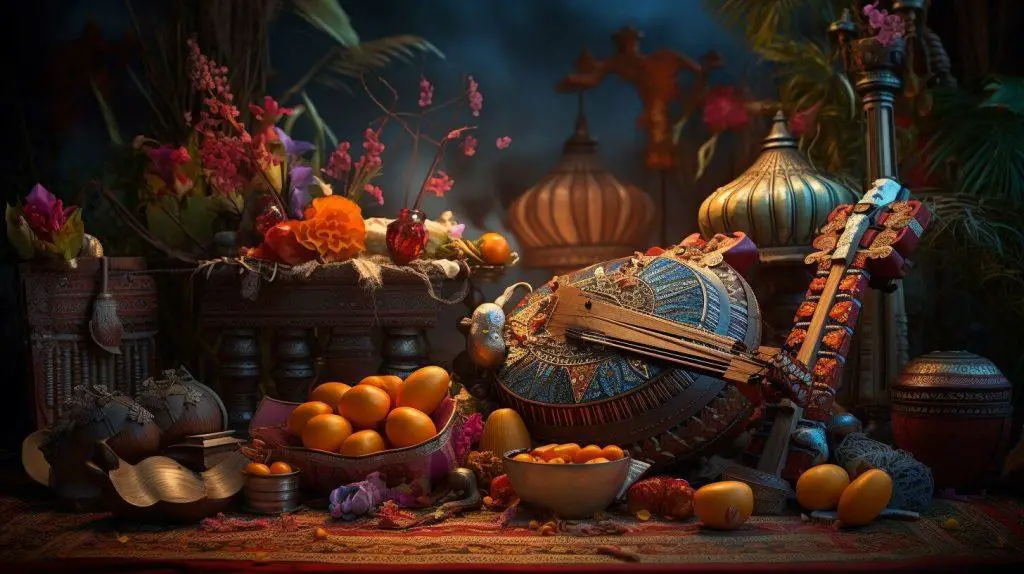
Traditional Cambodian Musical Instrument Performances and Ensembles
Cambodian music is often performed in ensembles, which vary in size and composition depending on the type of music being played. Some ensembles feature only string or wind instruments, while others include percussion instruments and dancers as well.
One of the most popular and traditional ensembles is the pin peat orchestra, which features a combination of wind and percussion instruments and is typically used for court music. Mohori music, on the other hand, is a popular type of chamber music that is often played at weddings and other celebrations.
Other types of musical ensembles in Cambodia include chapey dong veng ensembles, which typically feature the chapey dong veng, a type of long-necked lute, and are often used to accompany traditional poetry readings. There are also ensembles dedicated solely to percussion instruments, such as the skor yike ensemble.
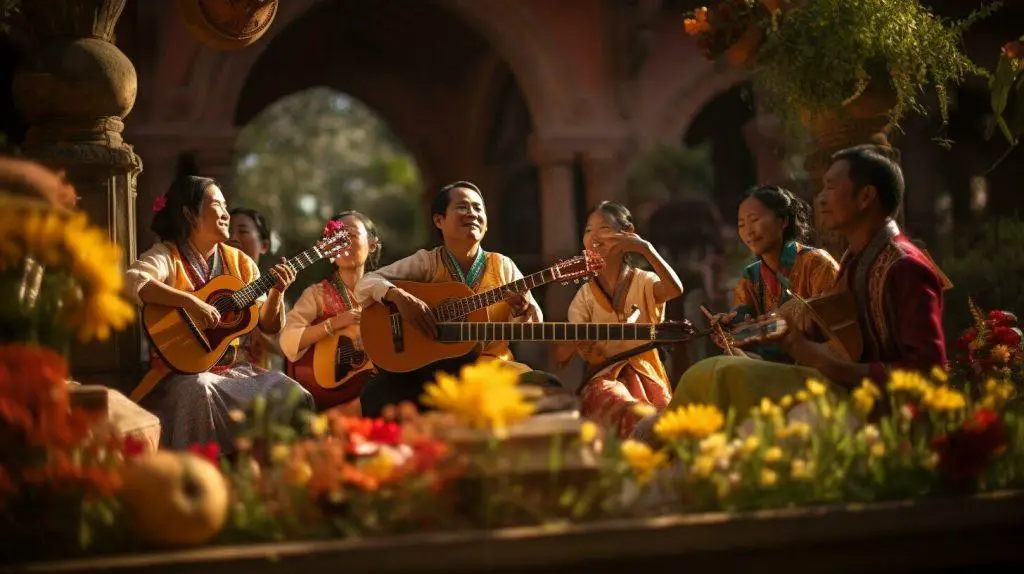
These ensembles are not only important for preserving the traditional sounds of Cambodia but also for passing down knowledge and skills to future generations. Many young Cambodians are learning to play traditional instruments through music schools and community organizations, ensuring that the music will continue to thrive for years to come.
Traditional Cambodian Musical Notation
Traditional Cambodian music notation systems have evolved over time, with various methods used to document melodies and rhythms.
One of the earliest and most widely used notation systems is called pinpeat, which uses a combination of numerals and symbols to represent each note and the duration of its sound. This system is used primarily for notating music played by the pinpeat ensemble, which comprises percussion and wind instruments.
Another common notation system is called kbach, which uses intricate and ornamental symbols to represent the notes and rhythms of a melody. This system is most often used to notate music for dance performances.
Both of these systems are primarily used in written form to preserve and teach traditional Cambodian music, with teachers and performers often relying on oral transmission and memorization to learn and perform pieces.
Modern technology has also provided new tools for documenting and sharing traditional Cambodian music. In recent years, some musicians and scholars have used Western music notation software to transcribe traditional Cambodian music, making it more accessible to a wider audience.
Despite these efforts, traditional Cambodian musical notation is still not widely known or used outside of Cambodia, and there is concern about the preservation of this important aspect of Cambodian cultural heritage.
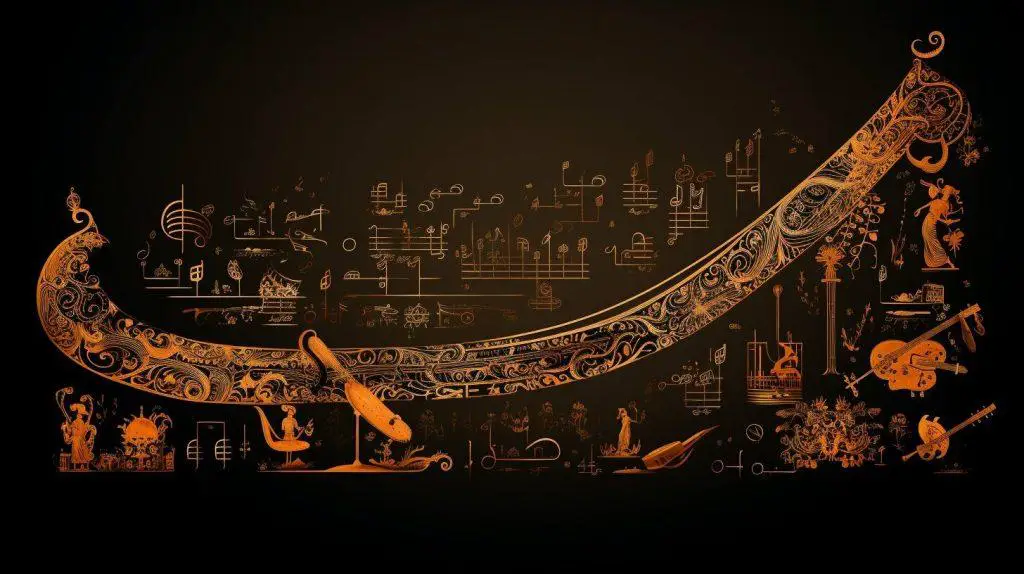
The image above shows traditional Cambodian musical notation used in the pinpeat ensemble.
Modern and Contemporary Cambodian Music
While traditional Cambodian music remains an integral part of the country’s cultural heritage, modern and contemporary genres have emerged in recent years. One such genre is Chapei Hip Hop, which blends traditional chapei dong veng music with hip hop beats and lyrics.
Another notable development is the rise of Cambodian pop music, which draws influence from Western pop and electronic dance music. Artists like Laura Mam and Nikki Nikki have gained popularity both in Cambodia and internationally, showcasing the country’s diverse musical landscape.
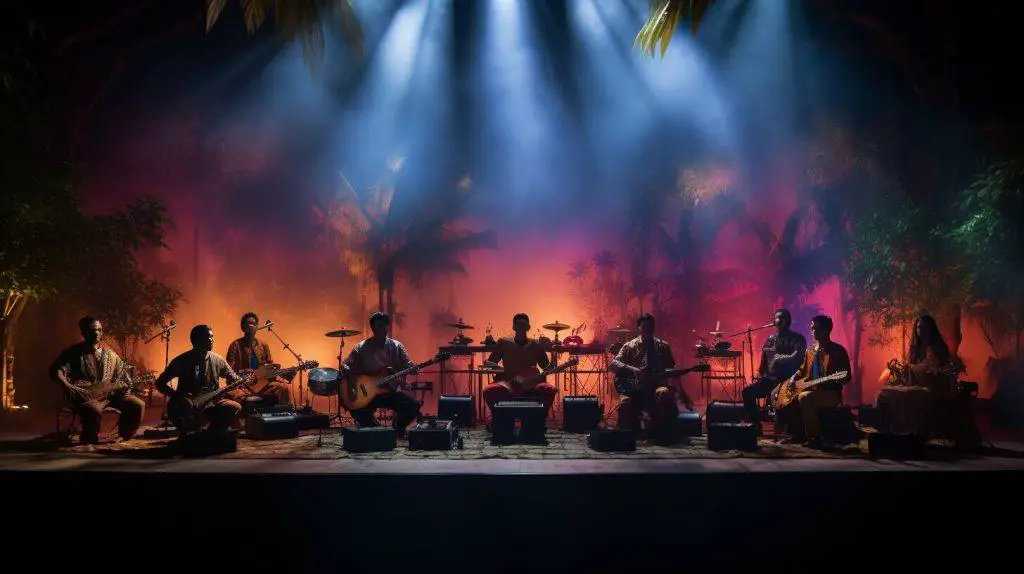
Additionally, Cambodian musicians have collaborated with international artists and producers, fusing traditional instruments and styles with contemporary production techniques. One such collaboration was between Cambodian Living Arts and American producer John Blevins, resulting in the album Aspara in New York.
While some may argue that these modern and contemporary genres dilute the authenticity of traditional Cambodian music, others see them as a reflection of the country’s evolving culture and a way to reach younger audiences.
Cambodian Music in Popular Culture
Traditional Cambodian music has not been immune to the lure of popular culture. In recent years, traditional instruments and musical styles have been featured in films, documentaries, and international performances, bringing them into the attention of a wider audience.
One prominent example is the 2015 film “The Last Reel,” which features the distinctive sound of the chapey dong veng, a traditional Cambodian lute. The film’s soundtrack was composed by award-winning Cambodian composer Krom Ngoy, who blended traditional instruments with modern sounds to create a unique and innovative sound.
Similarly, the iconic pin peat orchestra has gained international recognition for their performances in major events such as the 2004 Olympic Games in Athens, Greece and the 2016 Smithsonian Folklife Festival in Washington, D.C.
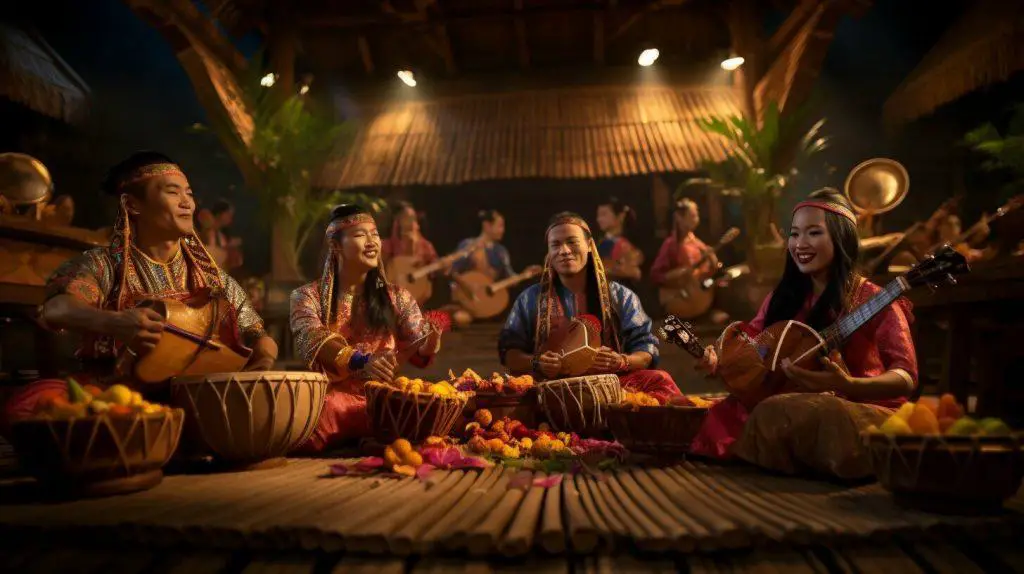
The continued presence of traditional Cambodian music in popular culture is a testament to its enduring appeal and cultural significance. As modern Cambodian music continues to evolve and adapt to new trends and influences, it is important to remember and appreciate the rich history and unique sound of traditional Cambodian musical instruments.
The Future of Traditional Cambodian Music
Despite efforts to preserve and promote traditional Cambodian music, the future of these cultural treasures remains uncertain. The impact of globalization and modernization trends has led to a shift in the preferences of younger generations, who may not appreciate the traditional music and instruments as much as their ancestors did. Moreover, there is a risk of losing the indigenous knowledge and skills required to create and perform these instruments, as well as the knowledge of musical notation systems.
However, there is hope for the future of Cambodian music. The continued efforts of local organizations and individuals to preserve and revive traditional music have been successful in recent years. For example, the Khmer Magic Music Bus is a nonprofit organization that brings traditional music performances to rural areas and helps young Cambodians learn about their cultural heritage through musical education.
Furthermore, modern technology has made it easier to record and distribute traditional Cambodian music, reaching a wider audience and introducing them to the beauty and cultural significance of the music. Contemporary musicians are also incorporating elements of traditional music into their work, leading to a fusion of traditional and modern styles.
The future of traditional Cambodian music may hinge upon finding a balance between preserving the old while adapting to the new. It is important to continue passing down the knowledge and skills required to create and perform traditional instruments, while also promoting the music to the younger generation and incorporating it in modern forms to keep the music relevant and appreciated.
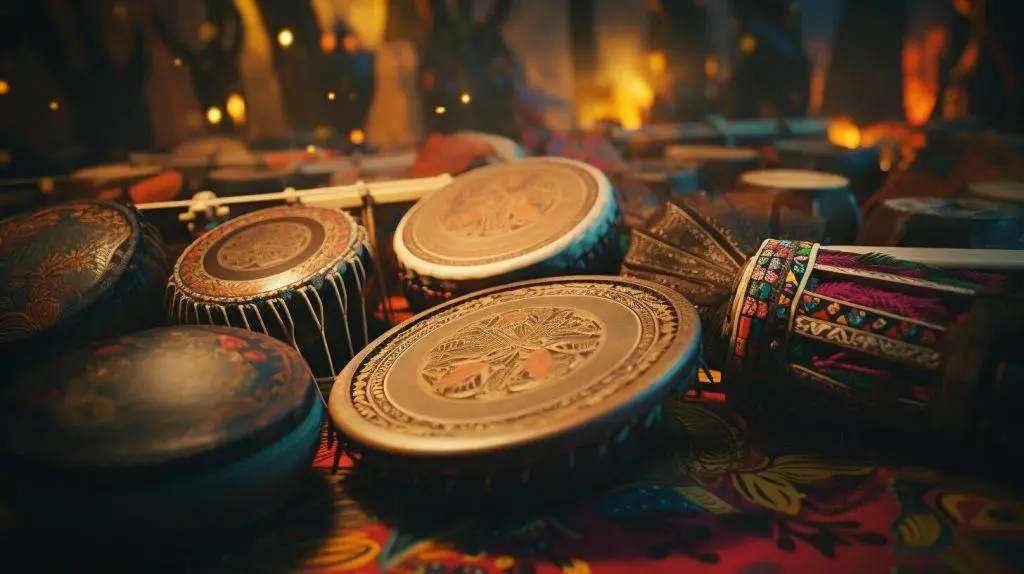
Conclusion
In conclusion, traditional Cambodian music is a rich and integral part of the country’s cultural heritage. With a variety of unique and beautiful string, wind, and percussion instruments, Cambodian music has played an important role in social gatherings and religious ceremonies for centuries.
The influence of Indian and Chinese music can also be seen in traditional Cambodian music, which has evolved over time to incorporate modern and contemporary genres. Despite the challenges faced in preserving and reviving traditional Cambodian music after the devastating impact of the Khmer Rouge regime, efforts are being made to ensure its continuation and modernization.
Cambodian music has also gained a presence in popular culture, with its use in films, television, and international performances. However, as globalization continues to impact the world, the future of traditional Cambodian music remains uncertain.
Overall, the beauty and cultural significance of traditional Cambodian musical instruments should not be overlooked. It is a treasure of the country that deserves to be cherished and celebrated for generations to come.
FAQ
What are the Traditional Cambodian Musical Instruments?
Traditional Cambodian musical instruments are instruments used in the traditional music of Cambodia. They include various string instruments, wind instruments, and percussion instruments.
What is the role of music in Cambodian culture?
Music plays a significant role in Cambodian culture, serving as a form of artistic expression, a means of communication, and a way to preserve cultural traditions. It is deeply intertwined with various aspects of Cambodian society.
What are some traditional Cambodian string instruments?
Traditional Cambodian string instruments include the tro khmer, chapey dong veng, and kse diev.
What are some traditional Cambodian wind instruments?
Traditional Cambodian wind instruments include the sralai, khloy, and peat ek.
What are some traditional Cambodian percussion instruments?
Traditional Cambodian percussion instruments include the skor yike, kong vong toch, and samphor.
How has Indian and Chinese music influenced traditional Cambodian music?
Indian and Chinese music have historically influenced traditional Cambodian music, introducing new musical styles, instruments, and techniques.
What is the relationship between traditional Cambodian dance and music?
Traditional Cambodian dance and music have a close relationship, with music often serving as the foundation for dance performances. They complement each other in performance.
How is traditional Cambodian music being preserved and revived?
Efforts are being made to preserve and revive traditional Cambodian music, particularly after the devastating impact of the Khmer Rouge regime. Organizations and individuals are working to document and teach traditional music to future generations.
What are some types of musical performances and ensembles in Cambodia?
Cambodian musical performances include the pin peat orchestra and mohori music. Ensembles can vary in size and composition, depending on the specific genre or occasion.
What is traditional Cambodian musical notation?
Traditional Cambodian musical notation refers to the systems used to notate and teach Cambodian music. These systems are unique and vary depending on the region and instrument.
How has Cambodian music evolved in modern times?
Cambodian music has evolved in modern times, with the rise of contemporary genres and fusion with Western influences. Artists are experimenting with new sounds and styles, while still honoring traditional roots.
How is Cambodian music represented in popular culture?
Cambodian music has a presence in popular culture, with its use in films, television shows, and international performances. It continues to captivate audiences around the world.
What is the future of traditional Cambodian music?
The future of traditional Cambodian music faces challenges and prospects. Globalization and changing preferences of younger generations pose challenges, but efforts to preserve and modernize traditional music provide hope for its future.
